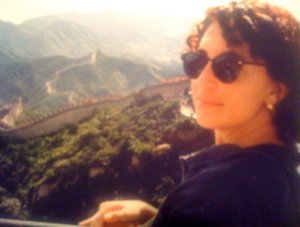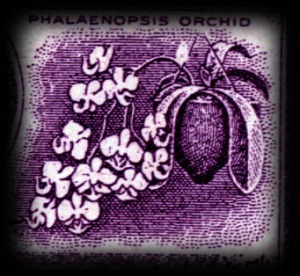Numerous primitive and tribal cultures believe a person’s soul is stolen when they’re photographed. I wonder if a photograph shows a soul being drained.
I’m delving into mental and photographic snapshots of my 12 year expat experience for a colleague’s blog: one highlight, one lowlight. The lowlight will be hard to choose.
My five years in Asia in the ’90s would amount to great adventure for most people, yet the evidence clumps together in my least favorite albums.
Off-camera life losses — separation from family, friends, language, community, the death of my best friend, the theft of my puppy, you name I lost it during my first longterm stint abroad — are reflected on-camera. Stripped of my cosmopolitan composure. Confident clothing. Gleaming skin. Chocolate curls. Toothy smile. Layer by layer, country by country, year by year I deplete and erode.
There are some monstrous stunners here.
 Sweaty and sun-damaged with unschooled fluffball haircut, captured in the gracious gardens of Raffles Hotel. I’d given up sunscreen, as well as hair products and all hope of finding a stylist who understood fine and curly.
Sweaty and sun-damaged with unschooled fluffball haircut, captured in the gracious gardens of Raffles Hotel. I’d given up sunscreen, as well as hair products and all hope of finding a stylist who understood fine and curly.
On the Great Wall of China, scowling Westerner in unladylike Doc Martens and baggy seersucker shorts (the only ones in the shops, I swear!), surrounded by svelte Chinese girls in platform shoes cheerfully waving tour company flags.
Thankfully these days the likelihood of snapping a picturesque portrait has gone way up even if my background doesn’t always match me.
What do your bluest images depict and how do they reveal the soul’s resiliency?
This blog has moved. Comment here.


 2010 Capital of Culture monthly feature of best Istanbul links
2010 Capital of Culture monthly feature of best Istanbul links